Illustration by Madalina Pavel (Picturise)
Youth political participation: understanding what we (already) know!
by Adina Marina Şerban
 We know that…
We know that…
Youth participation in political, social and economic life is crucial for a healthy democracy (Youth Partnership). And youth participation has been at the core of working processes within the youth sector. Approached by the different angles of the youth triangle, youth participation continues to be one of the most important policy priorities, while research dedicates extensive resources in trying to understand the new forms of youth political participation. At grass-roots level, youth organisations and youth workers are still struggling to find tools and instruments to stimulate youth participation, while working with young people on including them as actors on the political participation scene. With the upcoming European elections 2024, political participation of young people is also high on the agenda of the Council of Europe and the European Union.
The narrative around youth political participation has been rather built around the traditional vs. conventional/new forms of political participation. Starting with 2018, research concludes that young people seem to be more interested in joining loose interest groups rather than traditional forms of political participation, while social media instruments were gaining popularity and sharing information among youth groups (Yurttagüler 2018).
In the youth sector, when analysing political participation, the framework is mainly defined through what we know about “visible” youth political participation. We know that voting or participation in political parties’ activities or participation in youth or regional/national parliaments and assemblies are still the most popular forms of youth political participation. The Youth Partnership defines political participation broadly as “any activity that shapes, affects, or involves the political sphere” (EU-Council of Europe Youth Partnership 2019). Consequently, in policy and research, we are still looking for the spaces and contexts where young people have a voice in influencing decisions that affect their lives: politics, relationships, or active engagement of young people in their communities, etc.
- SALTO Participation & Information (Salto Pi) defines three typologies of political participation: conventional/traditional political participation – includes institutionalised activities taking place in the electoral arena, such as voting, standing in elections or becoming a member of a political party, youth organisation or youth or student council;
- unconventional/alternative political participation activities which aim at influencing the political domain but are carried out via different means than the narrow avenue of conventional participation, activities which use out-of-the-system approaches to achieve their goals (youth movements, demonstrations, strikes, boycotts or petitions, etc.);
- individualised political participation – often takes place at the individual level and as such does not require group, community or mass action. It is mainly linked to activities of the individual, activities that carry a political meaning in various areas, such as animal welfare (veganism), or ethical aspects of the production processes (buycotting) (Bárta and Lavizzari 2021, Salto Participation and Information 2022).
Understanding new forms of political participation has been one of the key topics for European institutions. The growing interest is also visible in the large amount of new resources recently released, such as: New forms of political participation (statistical survey).
A long-awaited study regarding the interaction of young people with their political system was run by the Youth Partnership in 2021. Three thousand young people (15-35), from 38 countries confirmed their interest in less conventional activities than voting, being a member of a political party or running as a candidate in elections. Only 5% of the respondents were members of political parties and less than 10% were registered as members of youth NGOs or other youth movements. But still, over 70% of the subjects expressed their interest in social and political subjects and were interested in following different causes. Thus, it should be evident that while the youth interest for social and political subjects has not changed, what has changed is their interest in different and novel forms of participation such as social movements, boycotts, buycotts, protests, petitions, disruptive actions or flash mobs. The study also shows that young people are more interested in global movements than previous youth generations. They are also keen on using digital channels for sharing information and connecting. Young people mainly acquire information about social, political and economic issues they are interested in through digital channels. In this setting, and as already mentioned, questions about media literacy, fact-checking and the ability to distinguish real from fake news are gaining importance.
Let’s conclude with two numbers that question not only policy-making processes but also youth work practices:
- Only 28% of young people believe that they have a say in their political system.
- 27% of young people feel they are not capable of participating in political and social issues.
These figures should be considered cautiously – because, youth is diverse. And young people who are living in rural settings, those with lower standards of living, a lower level of education, those who do not have any parent previously engaged in a social and political organisation or who are not employed have less confidence in their ability to participate, and in their possibility to have a say in social and political issues compared to other groups.
Youth political participation remains strongly connected to young people’s life circumstances and social, economic and cultural factors. It depends on their age, where they live, their gender, level of education, socio-economic and family background.
- Study: Meaningful political participation in Europe: concepts, patterns and policy implications
- Contemporary forms of young women’s participation: priorities, challenges and ways forward?, podcast and visual
- Youth participation and digitalisation and visual (upcoming).
Youth participation is also currently happening in a totally different space, in a space where civil society is shrinking, where conflict, war and the much-needed and awaited peace are constantly in the discourse. But even in these spaces, advantages come with using digital participation tools. From young people’s perspectives, the benefits of digital participation are the ease to organise themselves and reach a larger audience and, also, to join these movements and advocate for peace from their safe spaces. But, of course, the safe spaces and the digital means are not open to everyone. Barriers to digital participation exist either due to a lack of equipment and infrastructure or a lack of competencies and digital competencies to use new media and digital technologies. Mapped in the offline world, inequalities are also replicated in the online spaces and, some of them, are even amplified – at times, except for missing the infrastructure and equipment, young people also miss the human resources that could train their digital skills development – teachers, youth workers, digital facilitators, etc.
- Evaluation of participant inclusion levels within the EU Youth Dialogue
- Study on the impact of Covid-19 on youth participation and civic space
Besides the shrinking spaces for civil society, one should also look at the impact of the pandemic on youth participation and youth spaces. The study dedicated to the impact of Covid-19 on youth participation and youth spaces shows that civil society has been increasingly silenced in recent years. This has significantly narrowed the space for participation in a broad sense, while the youth participation sector has been dramatically impacted. The study shows that:
- one third of youth organisations experienced significant restrictions in participating (for instance, in organising or taking part in public meetings or demonstrations);
- less than 30% of organisations were able to engage fully without fear of retribution;
- 1 out of 10 youth organisations experienced difficulties in expressing themselves.
Rarely, youth participation has been treated separately as a generic and general subject. Studies dedicated to social inclusion and participation or digital participation have emerged in recent years but very little is known about the participation of groups considered to have fewer opportunities or facing multiple barriers to participation. The newly released study on young women’s participation is, indeed, a novelty in the youth research field. The research is confirming the fact that for many young women, political participation (either offline or online) remains challenging. In many countries, gender-based discrimination continues to pose critical barriers to the full participation of young women in democratic life, while the marginal role that women have in some communities is definitely a barrier to participation. But still, young women manifest a great interest in topics like education, health, mental health and well-being, access to education and learning, poverty and inequality, environment and climate change, and women’s rights and gender equality. At the same time, young women also have a lower sense of political efficacy in formal and conventional strategies. Only 23% of them think that their say will be considered by their government, compared to 31% of young men, while lacking sufficient digital competencies and skills are considerable obstacles in young women’s participation.
The Youth Partnership’s new Youth Knowledge Book on youth political participation gives a glimpse into the landscape of contemporary young people’s political participation in a changing world, highlighting realities, trends and main issues. While it doesn’t try to answer all questions related to the topic, it serves as a tool for better understanding of the phenomena involved, and as a source of inspiration for youth research, youth policy, youth work practice and young people.
 What we thought we knew about…
What we thought we knew about…
Nowadays, youth political participation is taking place in the context of a shrinking space for civil society, a rise in populist ideologies and ongoing conflicts. As these topics dominate the public agenda, young people also tend to be more and more interested in global movements and international causes. The most recent Youth Partnership study confirms that the youth political forms we knew and which claimed to offer youth the space and role in leading their communities’ development are not those that young people are looking for: 1 out of every 10 young people (11% of respondents) stated that they are engaged with political parties as members or volunteers, of which only 4.8% are members. Only 34% of survey respondents stated that they voted in local, national or European elections in the last 12 months (Yurttagüler and Pultar 2022).
While young people’s patterns (and lack) of participation were often explained through the lens of conventional and unconventional forms of engagement, two other essential dimensions were added to the discussion: the advancement of digital technologies and of their popularity within the youth group, and the pandemic. Digitalisation was already there for a while and trying to balance the false narrative of the “digital natives”. Experts in the youth sector mapped the need to invest more in helping young people develop their digital competencies. In the youth sector, it was expected that youth workers would play an active role in ensuring growing access of youth to digital tools and instruments. At the same time, public authorities were expected to invest more resources in making available these tools and instruments that youth workers would need in the process. In 2022, Eurostat data showed that 96% of young people in Europe were using the internet daily but according to the same set of data, only 23% of young people used the internet for civic or political participation. Although it may appear low, 23% is a great advancement compared to the 2015 data, when only 4% of the youth population was using the internet for the same purpose.
The growing interest in understanding youth digital participation also arose with the forced digital transition generated by the pandemic. All of a sudden, both public and private entities were determined to change their operations’ mode and to use the internet to run their daily activities. The same has happened in the youth field as well and many forms of “traditional participation” were recreated online – such as youth conferences, online protests, meetings of youth councils, etc. Young people started to use the digital platforms to share information, to join social media campaigns, to co-create content. What we know from the meta-analysis around the impact of Covid-19 on the youth sector is that some forms of youth political participation were successfully recreated in the online format – especially the activities of the youth councils, and training and educational activities around participation, while these activities became attractive to groups of young people who were not involved before – mainly those facing geographical barriers or some sort of social or economic barriers. At the same time, the same research shows that social or economic determinants, such as lack of financial resources to access the internet or the needed equipment and low digital competencies within some groups of young people, have negatively impacted young people’s participation in online spaces.
 What we don’t know…
What we don’t know…
And just like that, the traditional narrative that evolved around conventional vs. unconventional forms of youth political participation is now taking another form: conventional vs. unconventional forms of youth political participation in the digital era while trying to understand the impact of the pandemic on youth, in general and on youth participation in particular. What we don’t know, at the moment, is what is still attractive to young people as new forms of youth political participation. We know that some forms were added and that digital tools were successful for a while, but we need to understand whether we would be able to frame the digital youth political participation tools and instruments before they get to be updated with and by young people faster than youth policy makers and researchers can integrate them. We are also not sure about the inclusive dimension of the new forms of youth political participation, but we know for sure that additional efforts and resources need to be invested to ensure youth digital literacy while training young people on youth political participation online.
The youth sector is now challenged to come up with support measures to invest in youth political participation in a totally different context: some of the youth groups are interested in local causes and are determined to participate in local actions looking for rapid change in their communities, while others prefer to join forms of participation that are not necessarily formalised but approach topics that are very relevant in their lives: promotion of human rights, mental health, health and well-being and access to education and learning. Most of these topics cannot be answered exclusively within the youth sector but require actions to be developed in an intersectional co-operation framework (Yurttagüler and Pultar 2022). And thus they ask for an improved dialogue between stakeholders in the youth field to advance a build-up of (better) evidence-based youth policies, while the youth organisations and youth workers are in constant dialogue with young people. Digital transformation has had a great impact on youth political participation, in multiplying the participation opportunities for many youth groups, and understanding that it has also imposed barriers to some. But the same type of transformation is able to generate changes in political participation that the sector would not be able to respond to in time, especially with the advancement of AI in the youth field.
 Now what…
Now what…
The year 2024 marks the elections for the European Parliament and is one of those moments when the youth sector could measure a little the extent of youth political participation. It is desirable to see more young people on the candidates’ lists and to have a higher voter turnout within the youth population. It is also the first time that some countries give young voters (16 and 17 years old) a chance to make their choice and contribute to the electoral process. And it is a crucial moment to see if the new narrative on traditional and unconventional forms of participation, combined with understanding digitalisation and the impact of the pandemic, is sufficient to generate an increased rate of youth political participation, one that extensively defines both the present and the future of the “main resources of Europe’s future”. Or whether another narrative should be built around the need to better understand the new modes of youth political participation.
The dichotomy between clear conventional vs. defined unconventional forms of participation is long gone when it comes to youth participation and especially to youth political participation. The needs and interests of young people are diverse and dynamic, so the youth sector is also expected to speed up the process of being able to follow these dynamics. What we know, for sure, is that conventional and traditional forms of youth political participation, seen through the lens that the youth triangle knew and understood, is long gone. Even if the basics of participation are there, the new forms are related to the means of participation or the growing interest of young people to explore global subjects and to connect to other young people in different parts of the world. One should not neglect the fact that institutions have been trying to catch up with this dynamic but, at times, when the outcomes of different projects and initiatives are available, other forms of participation are explored by young people. And what we know is that we would probably not be able to follow the permanent change of young people’s needs and interests but we, as youth workers, policy makers and researchers, could try to allocate more resources into trying to explain and to understand these dynamics, in due course.
 References
References
Bárta O., Boldt G. and Lavizzari A. (2021), Meaningful youth political participation in Europe: concepts, patterns and policy implications, Council of Europe Publishing.
Dezelan T. (2022), “Covid-19 impact on youth participation and youth spaces”, research report, available at: https://pjp-eu.coe.int/documents/42128013/72351197/The+impact+of+the+covid-19+pandemic+on+youth+spaces.pdf/9bfe2c91-6cc1-2fdf-4d3f-7197b350fd7d, accessed 6 December 2023.
Escamilla A. et al. (2021), “Meta-analysis of research on the impact of Covid-19 on the youth sector”, available at: https://pjp-eu.coe.int/documents/42128013/72351197/Meta+analysis+of+research+on+the+Impact+of+Covid-19+on+the+youth+sector%2C+12-2021.pdf/de8544e4-a246-3b14-580b-7bbdb1d27973, accessed 6 December 2023.
EU-Council of Europe Youth Partnership (2019), “Compendium – ‘The future of young people’s political participation: questions, challenges and opportunities’”, available at: https://pjp-eu.coe.int/documents/42128013/47262631/Compendium-YouthPolPart-FINAL.pdf/ee5e0b8f-b2cb-6519-8658-25fbf424c18c, accessed 6 December 2023.
Eurobarometer (2022), Youth and Democracy in the European Year of Youth, available at: https://europa.eu/eurobarometer/surveys/detail/2282, accessed 6 December 2023.
O’Donovan J. and Petkovic S. (2022), “Briefing October 2022: the impact of Covid-19 on the youth sector and relevance of the EU recovery and resilience plans”, available at: https://pjp-eu.coe.int/documents/42128013/72351197/Impact+of+Covid-19+on+youth+sector+and+relevance+of+the+EU+Recovery+and+Resilience+Plans.pdf/fe775e78-5954-e104-69ea-0a05f895ceba?t=1670233995955, accessed 6 December 2023.
Prensky M. (2001), “Digital natives, digital immigrants”, On the horizon Vol. 9, No. 5, pp.1-5.
Salto Participation and Information, available at: https://participationpool.eu/resource-category/youth-participation/, accessed 6 December 2023.
Şerban A. M. et al. (2020), Social inclusion, digitalisation and young people, Council of Europe Publishers, Strasbourg.
Ștefan V. and Șerban A. M. (2020), “Youth inclusion, digital solutions and the global pandemic”, available at: https://pjp-eu.coe.int/documents/42128013/63918992/POY%2520EYE%2520Digital%2520platforms%2520covid%252026%2520May%25202020.pdf/ebef686d-c741-9e35-e2c1-96fb299eb759, accessed 6 December 2023.
Yurttagüler L. (2018), “Citizenship education in changing times”, available at: https://pjp-eu.coe.int/documents/42128013/47262508/Cit+Edu_Discussion+Paper.pdf/1200d0e5-78a3-57e7-d92b-d2f25e2ce553, accessed 6 December 2023.
Yurttagüler L. and Deželan T. (2021), “Shrinking democratic civic space for youth”, available at: https://pjp-eu.coe.int/documents/42128013/59895423/TDLY_CSYP.pdf/cb8643c1-2707-0f1b-3f81-f13704dc9081, accessed 6 December 2023.
Yurttagüler L. and Lavizzari A. (2023), “Contemporary forms of young women’s participation: priorities, challenges and ways forward?”, available at: https://pjp-eu.coe.int/documents/42128013/223741253/Young+women+and+political+participation.pdf/fa63dd5a-3cd3-1715-98de-945c4d520d67?t=1692889385058, accessed 6 December 2023.
Yurttagüler L. and Pultar E. (2022), “New forms of youth political participation: statistical survey, available at: https://pjp-eu.coe.int/documents/42128013/223741253/New+forms+of+youth+political+participation+May+2023+final.pdf/f5f645a3-87d0-068c-a64f-7e16d304ac53?t=1684313970716, accessed 6 December 2023.

Adina is a youth sector professional with a strong commitment to advancing cross-sector cooperation in the youth field.


